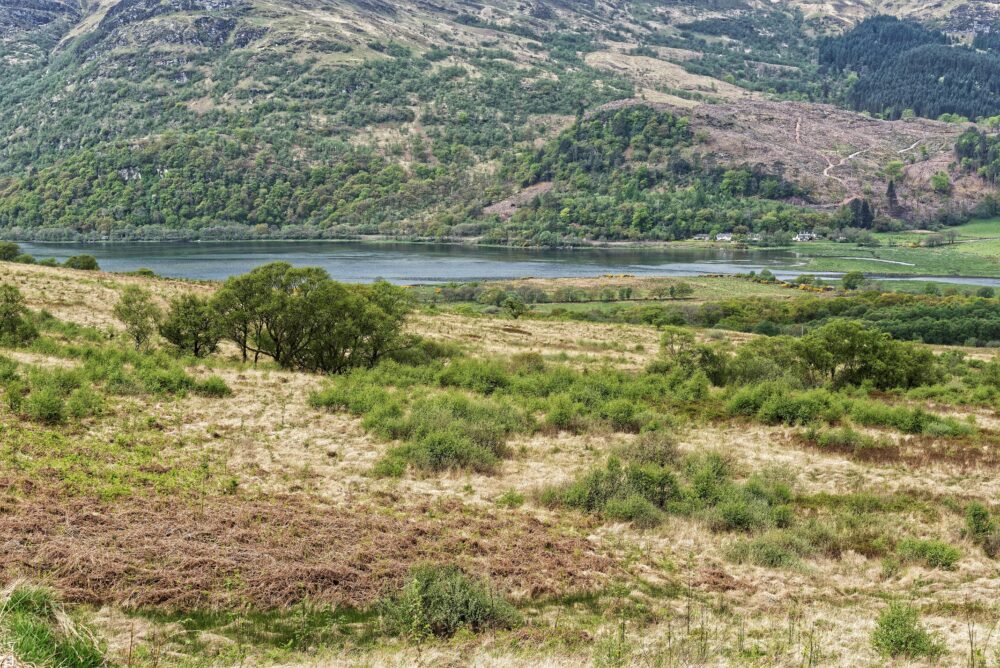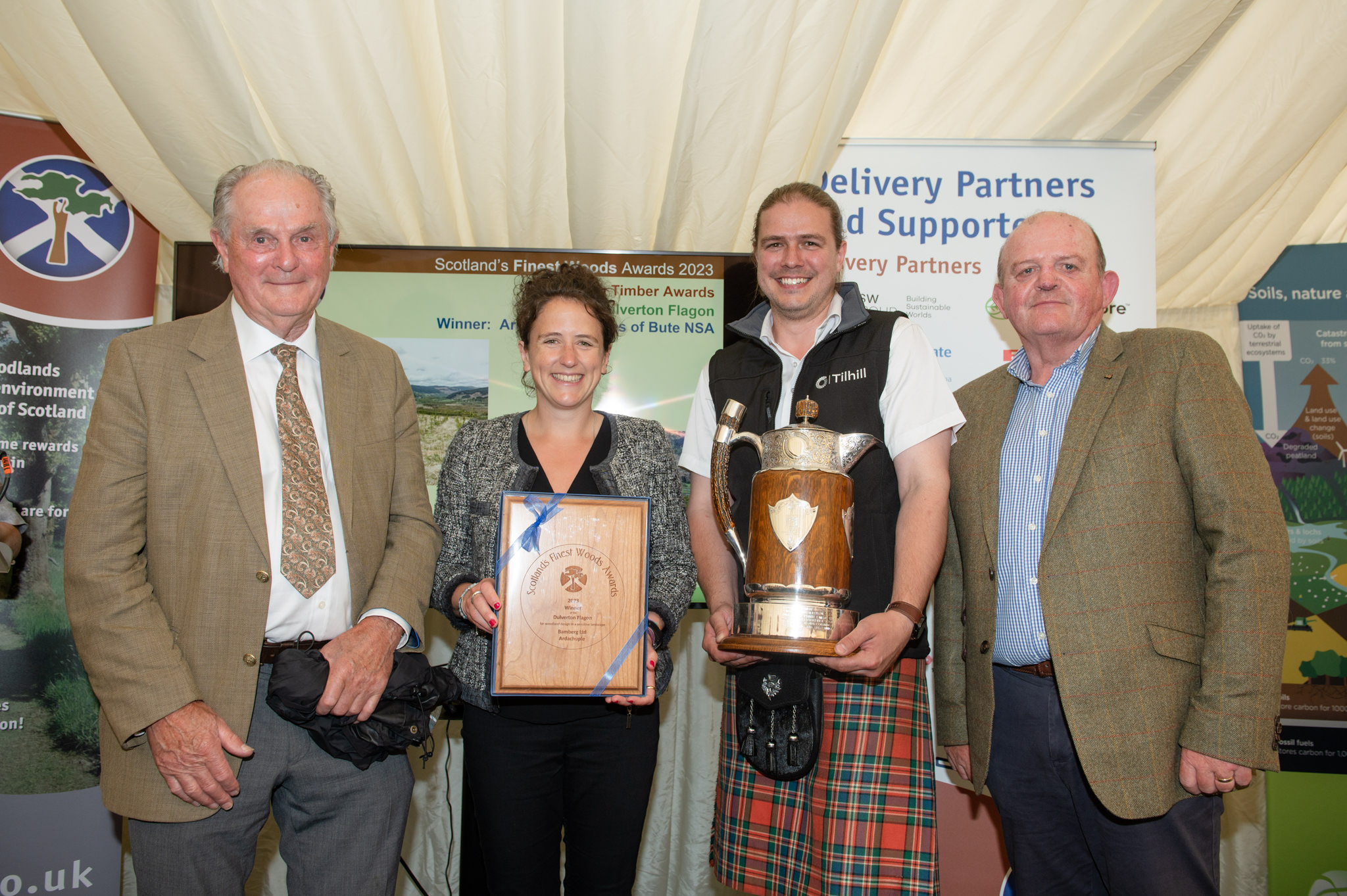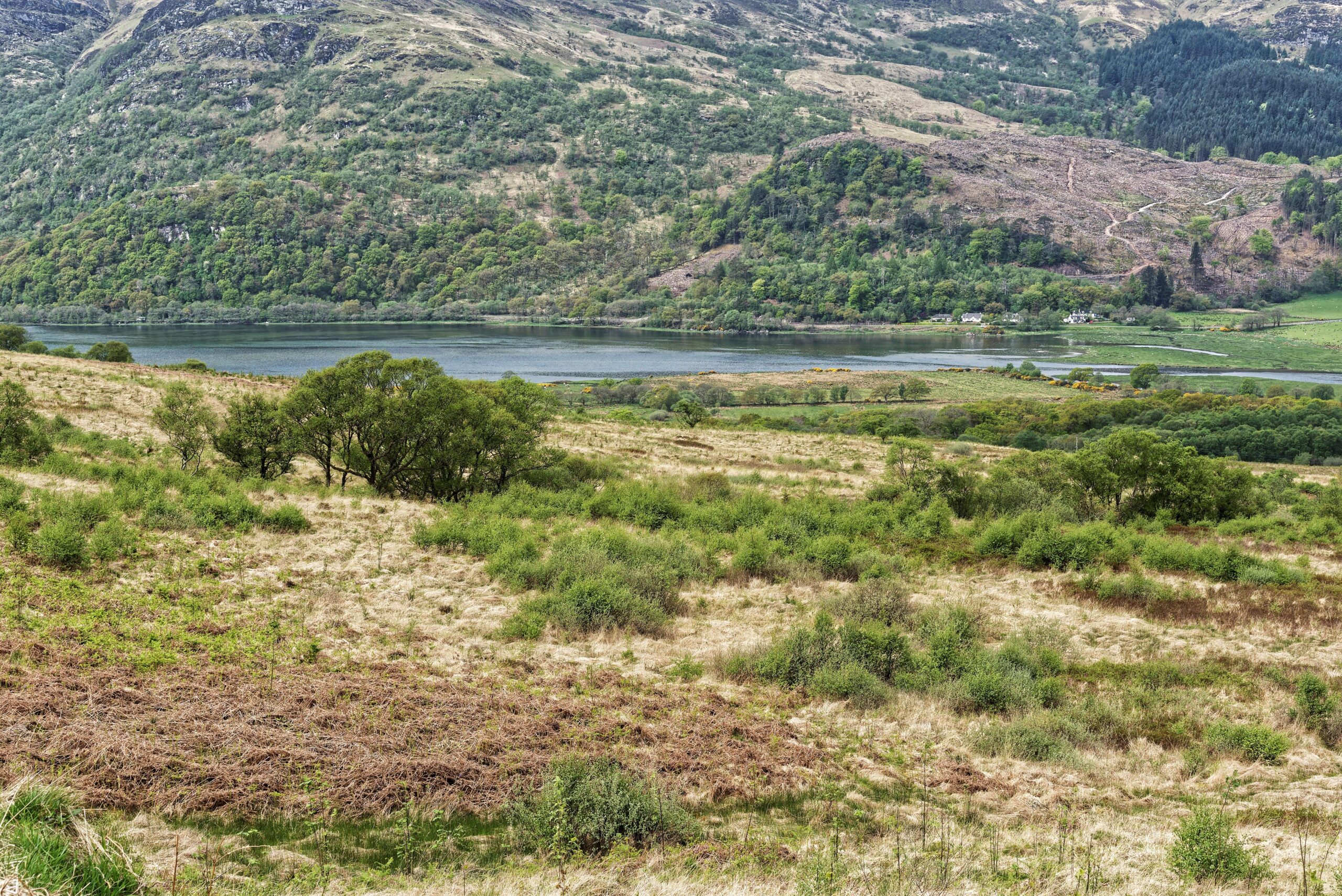There was also a special award for forestry which balanced commercial aims with biodiversity and the wider environment, and an award for new native woodland planted in memory of a lost family member 15 years ago.
A brilliant example of agroforestry using pigs won David Carruth the Scottish Woodlands Ltd. Trophy for Young People for his work at at Brodoclea, Dalry, North Ayrshire for The Future Forest Company Ltd.
The judges praised the “innovation being shown in establishing this enterprise” while David told them: “I work with a herd of 163 Mangalitza pigs. The pigs manage the forest by grazing down the dominant species on the forest floor, allowing other species of plants and young trees to thrive. To maximise their effectiveness in this role I use a system of rotational mob grazing, keeping the pigs in large groups and grazing them through twenty separate 25-acre forest paddocks.”
David added: “I grew up in dairy farming and it was always said that farming was dead. I studied environmental science and found a way back into farming using both.
“Pigs are just brilliant for the woodland, they are the ultimate eco-system engineers … it makes your wood more resilient in a changing world.”
He hopes more young people can enter farming: “When you get young people on land with creative ideas you can solve a lot of the problems of our time.”
In the Quality Timber Awards the winner of the James Jones Trophy for New Commercial Woods was Crofthead, near Moffat in Dumfries & Galloway which aimed to produce a highly productive forest while maintaining biodiversity and visual aesthetics.
The judges said: “In terms of modern Scottish forestry practice, this project provides something of an exemplar. The aim to marry quality timber production with strong biodiversity credentials looks as if it will be well achieved. The site is highly productive and located at the bottom of the hill, and could have carried a greater percentage of Sitka spruce, but the owner has decided that the site conditions warranted a more diverse species mix yet still with a focus on timber production and is highly commended for that
The Winner of the John Kennedy Trophy for Multi-purpose Woodlands for Whole Forest or Estate was Barracks Forest, near Kinloch Rannoch, Perthshire for CCF LLP c/o Fountains Forestry UK Ltd. This covers an extensive area of Rannoch Moor and hills, situated to the west of Loch Rannoch in north-west Perthshire. It extends to 4409ha and is reputed to be one of the biggest privately-owned commercial conifer woodlands in the UK.
They aimed to maximise the productivity using sound silvicultural practice while helping biodiversity, managing deer and encouraging public recreation. The judges were impressed: “The management approach adopted is clearly delivering against the stated aims and is achieving commercial returns and associated employment in a challenging location.”
The winner of the Dulverton Flagon, an occasional award given at the judges’ discretion for a successful balance between commercial forestry and competing objectives was Ardachuple, in a National Scenic Area at the Kyles of Bute, Cowal – owned by Bamberg Ltd, the trophy was collected by Bryan Pearce the forest manager for Tilhill.
The work saw them establish a productive crop using sound silviculture. At the same time they developed biodiversity for the benefit of wildlife and raptors, and enhanced habitat where possible existing native woodlands.
The judges said: “Ardachuple was an extremely well designed, planned and implemented scheme which showed how commercial woodland can be established in a very sensitive landscape.”
The winner of the Woodland Trust Scotland Trophy for New Native Woods was Martyn’s Wood, Crannich, Isle of Mull.
It was planted in memory of Martyn Osmond, the nephew of owner Robin Sedgwick, who passed away as a result of a tragic accident on January 1, 2009, at the age of just 21. Robin told the judges: “We felt planting this woodland at a time of great sadness would turn a negative situation into a positive ‘living’ future.”
It was difficult to have a good tree establishment on infertile, exposed, treeless land. Because of that they used Alder and Poplar, both fast growing, to nurse the more tender stems of Oak, Willow, Rowan, Silver Birch and Hazel. The bulk of the Poplar will be removed once the woodland is fully established.
This year’s winner of the prestigious CarbonStore trophy for Climate Change Champion was The Future Forest Company Ltd for Dumyat, near Stirling.
They have produced a “multi-use forest for the future”, with the main objectives of carbon sequestration, enhancing biodiversity and providing for communities, both now and for years to come.
Winner of the Large Community Woodland Group competition and of the Tim Stead Trophy for the overall Community Woodland Award were Friends of Almondell & Calderwood with West Lothian Council for Almondell Woods at Almondell & Calderwood Country Park.
They delivered rejuvenation and restoration projects within the boundaries of the old Almondell Estate, restoring a 19th century walled garden with building work and the planting of fruit trees to demonstrate heritage cultivation methods. There is now also a community heritage trail around 9 historic features dating from 1790’s, as well some great woodland management.
Meanwhile, Fordyce Primary School near Portsoy in Aberdeenshire took home the Crown Estate Scotland Schools’ Trophy. And the winner of the Scottish Forestry Early Years’ Trophy was Bushcraft Bairns at Comrie Croft, Perthshire who created a Forest School setting that nurtures connection with nature through play.
Mairi Gougeon MSP, Cabinet Secretary for Rural Affairs, Land Reform & Islands, who presented the Awards, said: “The Awards are a great opportunity to celebrate our trees and woodlands, and especially, all the inspiring people who care for them. I’d like to congratulate the award winners and everyone who took part.
“This year we’ve had some fantastic entries which shows Scotland really does have a vibrant forestry and woodland sector.
“I’m particularly pleased to see so many children and young people involved in award entries. We need to grow and nurture our future foresters from an early age and attract more young people into the world of forestry. This is an important issue that needs collective public and private action and I’m looking forward to discussing this, and finding solutions, at the forthcoming Scottish Forestry Summit later in the year.”
Jean Nairn, Executive Director of Scotland’s Finest Woods, said: “Once again, Scotland has excelled itself in producing some world-beating examples of forestry and woodland, not least in the important sphere of climate change.
“The awards ceremony is a well-established fixture on the calendar and it is always pleasing to see such a wide range of entries, from early years through to more seasoned foresters, community groups to farmers. I think another benefit of today was that everyone learned something from each other – all doing things differently but with the aim of the environment and trees at the heart of it.”





